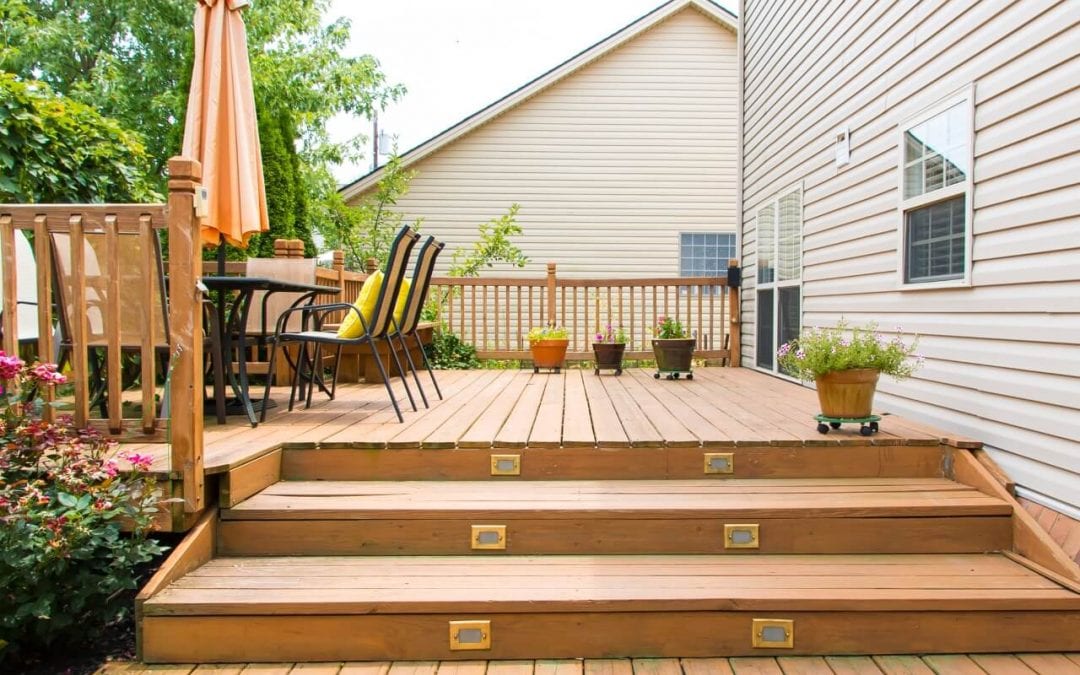Spring is fast approaching and this is the perfect time of year to build a new deck in the backyard. A deck extends your living spaces and gives you a place to gather outdoors with family and friends. If you’re building a new deck or reconstructing one that already exists, first learn about the pros and cons of different types of decking materials.
Pressure-Treated Wood
Pressure-treated lumber is probably the most common type of material for decks. Because it is treated, this type of wood is resistant to rot and insects. A wooden deck nicely complements the natural beauty of the outdoors. Wood provides good sound absorption and can last up to 20 years with proper care.
The downside of using wood for your deck is that it requires a lot of maintenance. The color of the wood will fade over time and it will need to be stained or resealed at least annually. Wooden decking is prone to splinters, warping, and will eventually rot.
Types of Decking Materials: Aluminum
Because of its strength and durability, aluminum is becoming more popular as a material for decks. Aluminum won’t rust, crack, or splinter. It’s resistant to insects and it requires almost no maintenance.
However, aluminum can be noisy with foot traffic or with a heavy rainstorm. It’s more expensive than other options and it can be slippery when it becomes wet.
Hardwood Types of Decking Materials
Tropical hardwoods may be the most aesthetically pleasing type of deck. These woods are on the higher end of the price range, but they can last up to 50 years.
Tropical hardwoods don’t have to be chemically treated and most are naturally insect-resistant. As with any wood decking, hardwoods will need to be cleaned annually and resealed at least every couple of years.
Composite Decking
Composites are another type of decking that’s becoming more popular. This material is usually made of wood scraps and plastics, though some composites are completely plastic. One of the main benefits of composite decking is that it is easy to maintain and easy to clean. Composite decking doesn’t require painting, staining, or sealing.
A composite deck can become slippery when wet but most have a textured surface to make it a bit safer. The plastics can get very hot in bright sunlight, making this deck uncomfortable for bare feet. The color may fade over time and composite decking doesn’t take paint or stain very well. Finally, the natural materials in composite decking can mildew and deteriorate.
If you’re planning to build a new deck, there are several great choices for materials. Choose a decking material that complements the style of your home, your lifestyle, and your budget.
Reifsteck Home Inspections offers home inspections to Champaign, Illinois, and the surrounding areas. Contact us to request our services.

